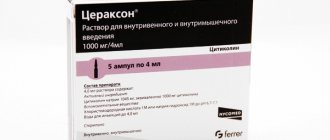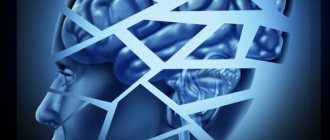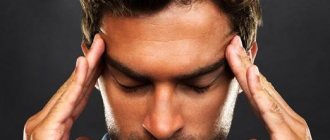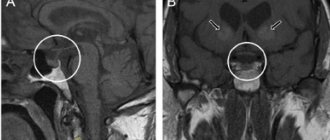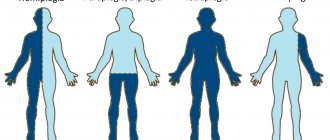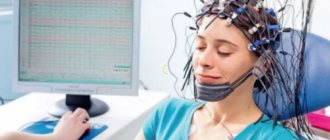Hemiplegic (Hemiparetic) form of cerebral palsy
Right-sided hemiparesis This form is most common. It is expressed in paresis, or paralysis, which covers one half of the body. The arm usually suffers more than the leg. Most patients have mental disorders, reduced intelligence (moronicity, idiocy), but such children are capable of learning and usually adapt to life in society and to work. Children with hemiparesis master age-related skills later than healthy ones. Therefore, the level of social adaptation, as a rule, is determined not by the degree of motor defect, but by the intellectual capabilities of the child. Clinically characterized by the development of spastic hemiparesis (Wernicke-Mann type gait, but without leg circumduction), delayed mental and speech development. Sometimes it manifests itself as monoparesis. With this form, focal epileptic seizures often occur.
Recovery time for children and adults with cerebral palsy
The sooner the stages of social and physical rehabilitation of disabled people with cerebral palsy , the faster and more effective the process of recovery and adaptation of the patient in real life will be, taking into account the limitations caused by the existing disease. It is important to introduce rehabilitation measures into the life of a child with cerebral palsy from the first day of birth. If there is insufficient attention to disorders caused by cerebral palsy, the first complications may appear already in early adolescence. Adult patients with cerebral palsy who have not previously received appropriate treatment are more difficult to rehabilitate and require additional attention from rehabilitation specialists.
The basic recovery course for patients with cerebral palsy, compiled by specialists in Moscow, lasts 30 days. The proposed program can be adjusted depending on individual indications.
Spastic diplegia (Little's syndrome). Tetraparesis with spasticity in the legs.
The most common type of cerebral palsy (3/4 of all spastic forms) is expressed in spastic paresis of mainly the lower extremities. Favorable prognosis for the possibility of social adaptation. The degree of social adaptation with normal mental development can reach the level of a healthy person. Spastic diplegia is characterized by the early formation of contractures, deformities of the spine and joints. Mostly diagnosed in children born prematurely. Pathology of the cranial nerves is common: convergent strabismus, optic nerve atrophy, hearing impairment, delayed mental and speech development, dysarthria, etc., including those caused by environmental influences on the child (insults, segregation). The patient’s psyche suffers, but not as much as in other forms of cerebral palsy. The prognosis for motor abilities is less favorable than for hemiparesis.
Medical Internet conferences
Relevance. Cerebral palsy (CP) is a non-progressive motor and psycho-speech disorder that results from brain damage in the pre- and perinatal period of nervous system ontogenesis (WHO, 1980). The incidence of the disease is 1.7 to 3.1 cases per 1000 children [1,2]. Pain syndrome is often the cause of suffering in patients with cerebral palsy: according to the literature, more than 50% of children [3,4,6] and 30-80% of adults [5] complain of pain. Despite this, insufficient attention is currently paid to the rehabilitation of an adult with such a diagnosis.
Objective: to identify the prevalence, structure and clinical features of pain syndrome in adult patients with cerebral palsy.
Material and methods. On the basis of the State Budgetary Healthcare Institution NOKB named after. Semashko observed 20 patients diagnosed with cerebral palsy aged from 22 to 56 years, average age 35 years, 8 women and 12 men, GMFCS levels I-IV. 35% of patients had a double hemiparetic form of cerebral palsy, in 1/4 of cases spastic diplegia was noted, hemiparetic and hyperkinetic variants accounted for 20% each.
The following indicators were analyzed:
- State of motor functions, muscle tone, presence of dystonic phenomena.
- The severity of pain using a visual analogue scale (VAS), the Russified McGill Pain Questionnaire (RMP), and a rating scale for neuropathic symptoms and signs.
- Psychoemotional status using the Hospital Anxiety and Depression Scale (HADS).
- The severity of degenerative changes in the spine using x-ray examination.
- Peripheral nerve fiber conduction velocity using electroneuromyography in patients with signs of neuropathy.
Results. Pain syndrome was diagnosed in 90% of patients, while vertebroneurological diseases of the cervical and lumbosacral level predominated in 67% of cases (degenerative-dystrophic, metabolic diseases of the spine, anomalies and dysplasia of the spine). In 1/3 of the patients, pain was presumably due to the influence of arthrogenic factors. In the study group, damage to the hip and knee joints predominated. Among the myogenic etiological factors of pain, which also occurred in 1/3 of the cases, spasticity and dystonia were identified. At the same time, dystonia was observed 4 times less frequently than spasticity. In isolated cases, compression-ischemic neuropathy of the median nerve was noted. The intensity of pain correlated with the GMFCS level and was highest in patients with hyperkinetic and double hemiparetic forms. Comorbidity in the study group was more common among patients with a BMI ≥ 25 and GMFCS level IV-V.
Patients had a high degree of anxiety (average HADS score 10.06) and less severe depression (average HADS score 6.18), which aggravated the experience of pain.
Conclusion. Pain syndrome in cerebral palsy is determined in the vast majority of cases; its localization and pathogenesis are different.
Vertebrogenic, arthrogenic variants and pain due to spasticity and muscle imbalance in dystonia predominate. The presence of comorbid and emotional-affective disorders should be taken into account when drawing up rehabilitation programs for these patients.
Double hemiplegia Spastic tetraplegia
One of the most severe forms of cerebral palsy, which is a consequence of brain damage due to intrauterine chronic fetal hypoxia. The cerebral hemispheres or the entire brain are affected. Spastic quadriplegia (quadriparesis, since both the upper and lower limbs are equally severely affected) is diagnosed clinically. Characteristic deformation of the trunk and limbs. In almost half of the cases, movement disorders are accompanied by strabismus, atrophy of the optic nerves, and hearing impairment. pseudobulbar syndrome, epileptic seizures are observed. Such patients subsequently cannot learn to sit, stand and walk; hand defects and lack of motivation exclude self-care and work activity. On the mental side, severe debility, imbecility, and idiocy are noted.
Is it possible to cure cerebral palsy if you try hard?
Photo: Evgeny Kurskov/TASS Demosthenes puts stones in his mouth and shouts over the sea. Hockey player Kharlamov goes on the ice for the first time after the accident and trains with the boys. We love stories about overcoming and believe in them - perhaps this is why the belief is so widespread that willpower can overcome any disease. Physical therapist Ekaterina Klochkova told “Takim Dela” whether it is possible to “cure” cerebral palsy if you try really hard.
Ekaterina Klochkova, physical therapist, director of ANO rehabilitation
Photo: from personal archive
The perception of cerebral palsy as a disease that can be cured is a myth: “Parents worked 24 hours a day and got the child on his feet, while others didn’t work and didn’t.”
Cerebral palsy is an umbrella term for a group of non-progressive conditions that are associated with damage to the brain early in its development (in utero, during childbirth, or in the first two years of life). It follows from this that it is impossible to “cure” cerebral palsy, since we cannot eliminate the cause of the motor deficit - structural disorders in the central nervous system. But the consequences of this damage can be compensated to varying (sometimes significant!) degrees.
We do not saturate the media space with examples and stories about what cerebral palsy is. Therefore, what do people focus on? To those heroic stories that exist around us - about rehabilitation. Here is Valentin Dikul (a circus performer who learned to walk after a spinal fracture - TD's note). No one is interested in what type of spinal lesion he had, that he would have regained his movements anyway... But there is a whole myth around this, how he raised himself to his feet, how all the doctors refused him, and he made these exercise machines himself, and so on Further. Or Alexey Meresyev (a military pilot who continued to fly after the amputation of both legs - TD's note) - here he is without legs, he was given prosthetics, he bled everything there, but he flew again. And the fact that these were adults who had disabilities due to injury or injury does not bother anyone at all.
It is impossible to “cure” cerebral palsy
On the one hand, people say the right things: rehabilitation of a child with cerebral palsy, or rather even habilitation (the process of developing abilities for everyday, social and other activities - TD), should really start early and be intensive. But on the other hand, the meaning that is put into this concept in our country is completely different. In our country, rehabilitation is what is done with a child in a special place: that is, for rehabilitation you need to go to a special place and have a specially trained person rehabilitate the child there.
In modern Western programs, habilitation is also very intensive and is carried out almost 24 hours a day. But this is not a hired masseuse or some kind of rehabilitation center where the child is not allowed to breathe. This is a trained mother who receives the support of specialists. All events in which the child participates - feeding, changing clothes, bathing - they will all occur in the correct position, with the correct movement, the correct rhythm. Mom, for example, will stimulate the hand that works worse. Of course, this child will be seen by certain specialists, but they will not do this every day, but will provide long-term support.
I was prompted to write an article by a conversation between two parents of special children. Its meaning was that one mother convinced another to go to the doctor “famous name” because “he puts even hopeless children on their feet.” In the end I convinced her. They collected money and suitcases, grabbed their children and set off to seek happiness and health. As it turned out, the popular doctor only accepts after a paid consultation (very expensive), and not every child is accepted for treatment (as a rule, the “easiest” cases). Moreover, he accepts it at home without a medical license. As a result, one mother was refused, and the second underwent an expensive rehabilitation course with very mediocre results. Having devoted very little time to studying reviews about this specialist, they found out that there were no less negative ones than positive ones. True, in the official group of this doctor they were removed to create an exclusively positive image. The “magic pill,” alas, turned out to be nothing.
“It’s a good advertisement,” I thought. The flow of those wishing to do so does not fade over time, and even word of mouth is unable to open people’s eyes to the true nature of his activities. Why is this happening? Then I remembered a topic that was very popular on the Internet several years ago - sprays for cerebral palsy (and much more). You probably also received personal messages from “ordinary mothers” who experienced the miraculous properties of these sprays on themselves and their relatives. They supposedly could cure anything: loss of vision, ulcers, cerebral palsy, diabetes and even cancer! Agree, it’s hard to believe this now. However, at that time a very wide advertising campaign was launched - every second publication on VK was devoted to reviews from parents or stories from “titled” doctors about an incredible discovery. During the inspection, it turned out that these sprays are distributed according to the principle of network marketing, and reviews are recorded by their distributors, who need to “sniff” more spray cans. There is nothing to say about the results of using these sprays. There is nothing because there are zero results.
Unfortunately, there were those who believed in ubiquitous advertising. Someone has been misled by this dishonest marketing. Someone believed it because they had already tried all the other available ways to heal. People who are in a difficult and hopeless situation cling to every chance, to any hope of recovery. This is our psychology.
I don’t have children yet, but I know about cerebral palsy firsthand: for several years now, every day I meet dozens of boys and girls with neurological problems. Each of them is special to me, but not because of the diagnosis, but because they are individuals, with their own interests, fears and desires. I talk a lot with them and with their parents, trying to understand what path they are going through.
Causes of cerebral palsy
The symptoms of cerebral palsy listed above are a consequence of pathological changes in the structure and functioning of brain structures, and disturbances in the transmission of nerve impulses from the brain to the muscles.
Damage and underdevelopment of structures, and disruptions in the relationships between them, in turn, are caused by the action of various factors on the brain in the period before, during and after birth. These include:
- genetic (developmental defects),
- infectious (intrauterine infections - toxoplasmosis, rubella, measles, chicken pox, herpes) and toxic (poisons, potent drugs, etc.) factors;
- violations of autoimmune mechanisms regulating fetal formation;
- oxygen starvation of the fetus;
- hemolytic disease of newborns due to incompatibility of the blood of mother and fetus according to the Rh factor;
- birth and postpartum injuries;
- meningitis, encephalitis, arachnoiditis of newborns, etc.

